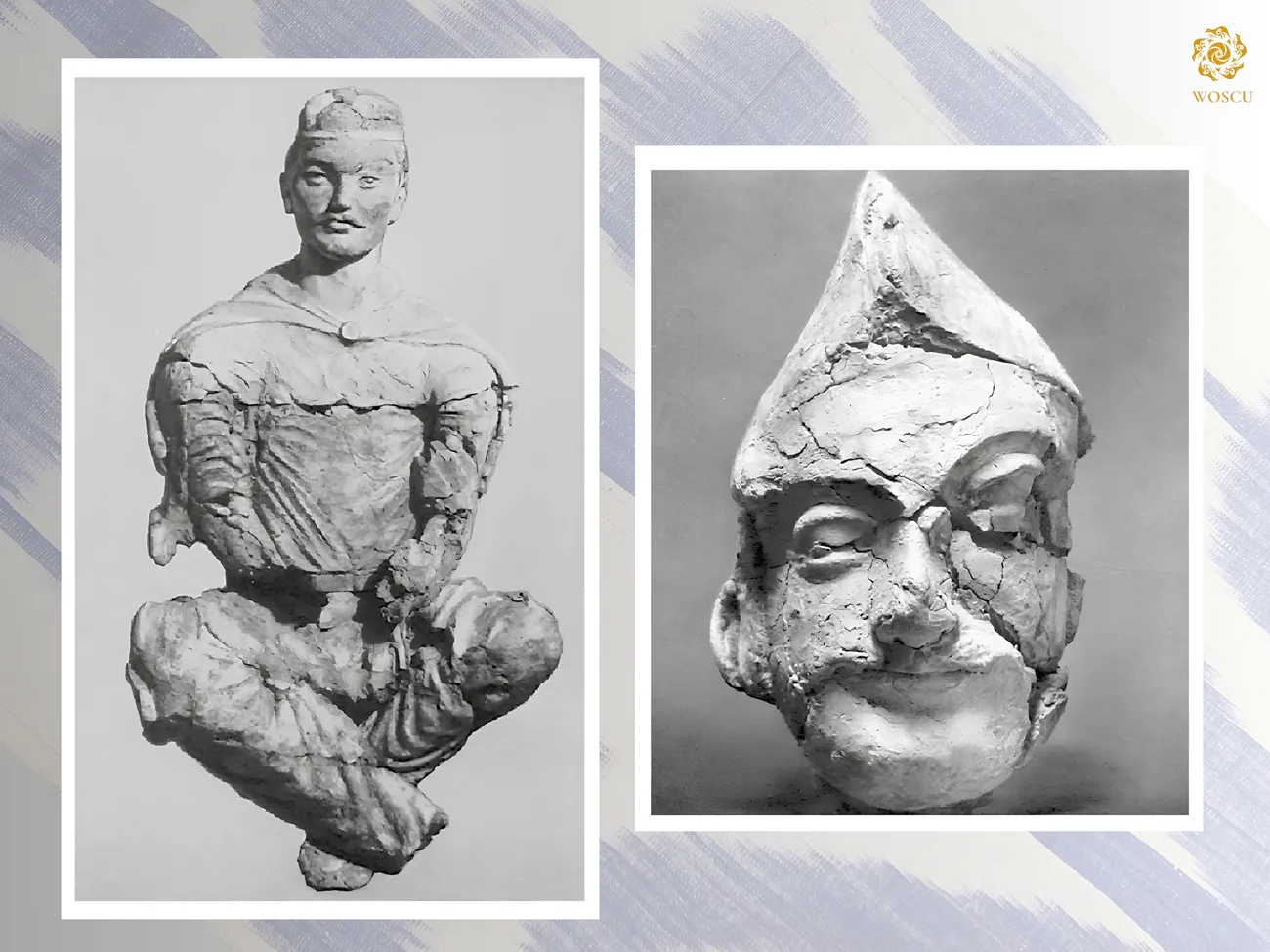
To date, there is a large body of numismatic material available for research, enabling us to speak with much certainty of the topography of various groups of coins minted in Bactria in the Yuezhi period. The largest number of specimens of the “Heraus” coins – 17 obols and a hoard of tetradrachms – are found in Southern Tajikistan, in the lower reaches of the Kafirnigan and in the Oxus temple at Takhti-Sangin. In other parts of Bactria and beyond they are only single finds (Dilberjin, Termez, Kabulistan, Gandhara, Uzundara).
It is indicative that not a single coin of the “Heraus” issues was found in the ancient region of Chaganian, despite the discovery there, at the site of Khalchayan, of the relief sculptures described by G.A. Pugachenkova as “the Heraus clan” and the claims of G.A. Pugachenkova to localize the capital city of the Guishuang xihou, Khodzo, on the site of Dalverzintepa. Thus, this fact alone completely excludes the Chaganian region from the list of possible location candidates for the xihou of Guishuang.
At the same time, the abundance of the “Heraus” coins in Southern Tajikistan cannot be proof that the Guishuang xihou was located in that area. This simply clearly indicate the extreme northern border of the distribution area of these coins, and probably, also the northernmost limits of the xihou of Guishuang (Kushan). If we take into account that the major dynastic temples, the most majestic and revered ones, of the Kushans are located in Surkh-Kotal and Rabatak, we can conclude with a high degree of probability that the center of the Guishuang xihou, the heart of the Kushan domains, from where the founder of the Kushan kingdom descended, and which must have, therefore, been impressive and distinguished by architectural grandeur, might have been situated in the present province of Baghlan in Afghanistan.
Perhaps, in this way, the great Kushan kings Kanishka I and Huvishka, under whose authority these temples were built, perpetuated the memory of their ancestors’ homeland, where the Kushan dynasty took its roots. It is of some importance to note that Baghlan was connected by direct roads over the Hindu Kush mountains with Kabulistan, the region where one of the representatives of the Kushan clan, Kujula Kadphises, started out his political career first as a co-ruler of the Graeco-Bactrian king, Hermeios, and then as the leader (yabgu).
You can learn more about the topic in the book-album "Kushan Kingdom: Dynasties, State, People, Language, Writing System, Religions" (XXXVI volume) from the series "The Cultural Legacy of Uzbekistan".
The general sponsor of the project is the oilfield services company Eriell-Group.
